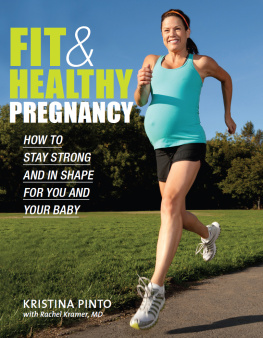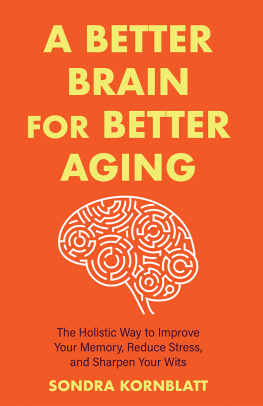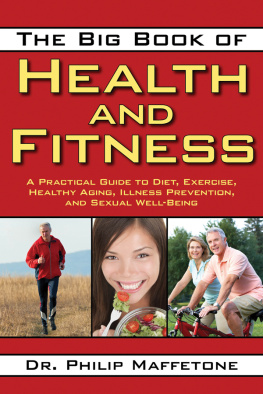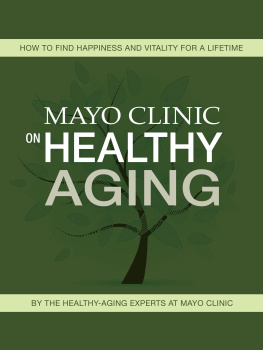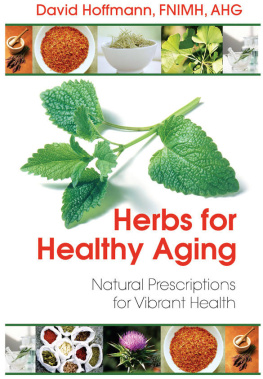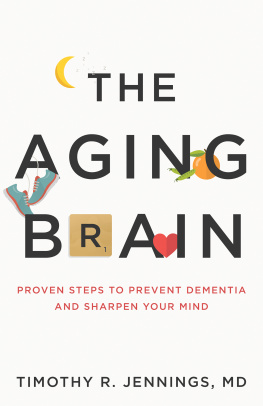A MANS GUIDE TO HEALTHY AGING
A Johns Hopkins Press Health Book
A MANS GUIDE TO HEALTHY AGING
STAY SMART, STRONG, AND ACTIVE
EDWARD H. THOMPSON, JR., AND LENARD W. KAYE

Note to the Reader. This book is not meant to substitute for medical care, and treatment should not be based solely on its contents. Instead, treatment must be developed in a dialogue between the individual and his physician. This book has been written to help with that dialogue. The author and publisher are not responsible for any adverse consequences resulting from the use of information in this book.
Drug dosage. The author and publisher have made reasonable efforts to determine that selection and dosage of drugs discussed in this text conform to the practices of the general medical community. The medications described do not necessarily have specific approval by the U.S. Food and Drug Administration for use in the diseases and dosages for which they are recommended. In view of ongoing research, changes in governmental regulations, and the constant flow of information relating to drug therapy and drug reactions, the reader is urged to check the package insert of each drug for any change in indications and dosage and for warnings or precautions. This is particularly important when the recommended agent is a new and/or infrequently used drug.
2013 The Johns Hopkins University Press
All rights reserved. Published 2013
Printed in the United States of America on acid-free paper
9 8 7 6 5 4 3 2 1
The Johns Hopkins University Press
2715 North Charles Street
Baltimore, Maryland 21218-4363
www.press.jhu.edu
Library of Congress Cataloging-in-Publication Data
Thompson, Edward H., Jr., 1945
A mans guide to healthy aging : stay smart, strong, and active / Edward H. Thompson, Jr., and Lenard W. Kaye.
pages cm. (A Johns Hopkins Press health book)
Includes bibliographical references and index.
ISBN 978-1-4214-1055-5 (hardcover : alk. paper) ISBN 1-4214-1055-9 (hardcover : alk. paper) ISBN 978-1-4214-1056-2 (pbk. : alk. paper) ISBN 1-4214-1056-7 (pbk. : alk. paper) ISBN 978-1-4214-1057-9 (electronic) ISBN 1-4214-1057-5 (electronic)
1. MenHealth and hygiene. 2. Older menHealth and hygiene. 3. Longevity.
I. Kaye, Lenard W. II. Title.
RA777.8.T56 2013
613.04234dc23 2012047831
A catalog record for this book is available from the British Library.
and the figure on page 77 are by Jacqueline Schaffer.
is by Carlyn Iverson.
Special discounts are available for bulk purchases of this book. For more information, please contact Special Sales at 410-516-6936 or specialsales@press.jhu.edu.
The Johns Hopkins University Press uses environmentally friendly book materials, including recycled text paper that is composed of at least 30 percent post-consumer waste, whenever possible.
To Stephen Thompson and Natalie Thompson
and Ruth Mendala-Thompson
with love and gratitude
To Dyan Walsh with love and appreciation for
her sound advice, unflinching support,
and inordinate patience
Contents
Acknowledgments
This book began, as many projects in the health field do, as an aha moment. Early in an Aging and Health seminar taught at the University of Massachusetts Medical School, one of the distinguished lecturers asked the audience what differentiated womens myocardial infarct symptoms from mens, and there was a pervasive silence. People had not expected gender to affect symptoms. Nor did the gerontology and medical students know where to begin to find information about mens health when, in the same week, a geriatrician asked the audience how men report the experience with passing a kidney stone, if women equate it with labor pain. There was no ready sourcebook about mens health approximating the classic Our Bodies, Ourselves or its companion volume, Ourselves Growing Older. The project was born, and previously unrecognized for their early inspiration are Jeffrey Burl, Deborah Liss Fins, Jim Hamos, Mary Leonard, Lynn Li, Ira Ockene, Susan Rezen, Stephen Roizen, Gary Tanguay, Henry Wiesman, and Rosalie Wolf. Most inspirational was Betty Friedans encouragement when the idea for this book was little more than aha. We also want to warmly acknowledge Abraham Monk, Jordan Kosberg, Jeffrey Applegate, Gail Werrbach, Sandy Butler, Nancy Kelly, and Nancy Fishwick.
It is certainly difficult to know where to start when it comes to thanking all the people who have contributed to this book. Any significant project in the health field involves a large number of colleagues and assistants, and we are truly grateful to the many people who contributed to this major undertaking. First and foremost, we are deeply indebted to the colleagues identified in the Contributors section who worked closely with us to offer very thoughtful suggestions and develop smart, readable chapters. Their contributions made the manuscript into a vastly better book. Along the way many other undergraduate students, graduate students, and faculty colleagues also provided invaluable support, and we warmly thank them. Some who contributed especially helpful comments, opportunities to talk through issues, or information as the book developed include Meagan Fisher, Andy Futterman, Ann Marie Leshkowich, Kendal Nielsen, Ivy Pruitt, John Quaresima, Sara Stockman, and Samantha Surface. Thanks also are due to the many graduate and undergraduate students (too numerous to mention) who have focused their education on gerontological health and human services practice over the years at the College of the Holy Cross and the University of Maine, including those enrolled in the Hartford Partnership Program for Aging Education, the Program in Leadership in Rural Gerontological Practice, and the Interprofessional Graduate Certificate in Gerontology. Their inquisitive nature and unbridled enthusiasm for better understanding and responding to the challenges and opportunities of an aging society have been both extremely contagious and invigorating. Colleagues at the School of Social Work and the Center on Aging at the University of Maine have been powerful forces in refining Kayes perspective on so many issues associated with contemporary aging and practice in the human services.
A number of people have read and commented on all or parts of this book. Two anonymous reviewers for the Johns Hopkins University Press read the manuscript and offered many suggestions. We appreciate their investment to make our work into a better book. Thompsons fall 2009 Men and Aging seminar students read earlier drafts of several chapters, providing invaluable critiques and recommendations for how their fathers would read and react to the information itself and its framing. Kayes fall 2009 gerontology seminar students engaged in initial background research on a number of topics addressed in this book, and three of the brightest were eventually recruited to be contributors. We are especially indebted to the colleagues listed in the Reviewers section, who graciously accepted the invitation to read and critique a chapter. They brought their expertise and contributed immensely helpful comments to clarify ideas, assist with factual issues, and offer advice. Their influence on this book is tremendous.
This book has received generous assistance along the way from the College of the Holy Cross and the University of Maine, especially the Committee on Faculty Scholarship at Holy Cross for its financial assistance for some of the anatomical drawings and for the award of a Batchelor-Ford Faculty Fellowship to complete the book manuscript. Parts of the material within chapters were presented at annual meetings of the Gerontological Society of America, the American Sociological Association, the American Society on Aging, Social Work with and for Men, the Council on Social Work Education, the National Association of Area Agencies on Aging, and the American Assembly for Men in Nursing. We thank the participants at these different venues for their helpful comments.
Next page

